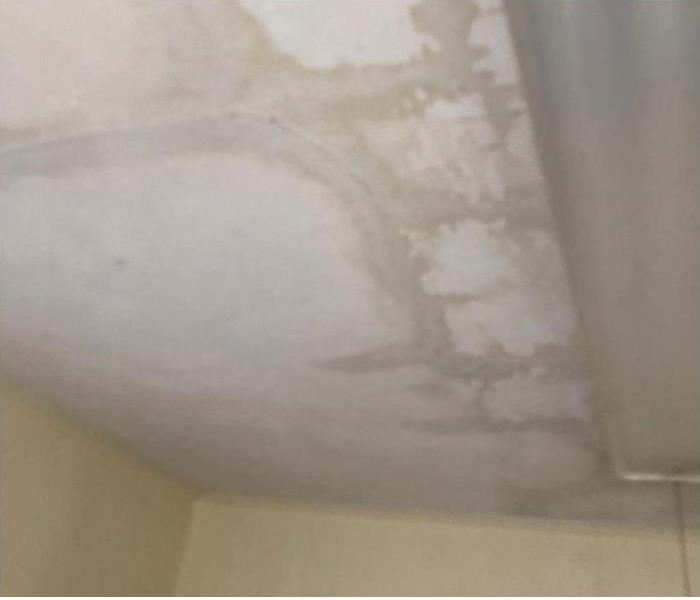Primary Principles of Restoring Milton Water Damage
9/6/2022 (Permalink)
 Leaks can leave a path of water damage on your Milton property. SERVPRO is standing by to restore your home.
Leaks can leave a path of water damage on your Milton property. SERVPRO is standing by to restore your home.
The Main Focal Points of Water Damage Restoration
Water emergencies must be approached with a sense of urgency to prevent the continued movement of moisture in the structure. Water follows the path of minimal resistance through a building to maintain a balance of temperature, pressure, and dampness. Several common triggers can cause the kind of damage that warrants professional cleanup, including:
- Spills
- Leaks
- Burst Pipes
- Flooding
- Broken Appliances
Milton water damage events are among the highest callouts for our professionals, making it a threat that we must stay dutifully prepared to face. Disasters do not wait for a convenient timeline to occur, so we keep WRT-Certified technicians and our inventory of cutting-edge equipment ready to mobilize 24/7 when needed.
Early Mitigation Saves Money
There is merit in our fast response beyond providing some peace of mind to the customer that recovery has started. This also helps to reduce out-of-pocket expenses and restoration time by lessening the impacted area and focusing on salvageable materials. An early mitigative step is water removal, which alone can protect porous flooring materials when started soon after our professionals arrive.
The Importance of Airflow
One of the three main drying principles that must be balanced for efficient water damage recovery in the household is airflow. Air movement in a work area can promote direct evaporation of moisture on wet surfaces. There are several tools and devices capable of helping with moving air at a high volume. These include:
- Centrifugal Air Movers - These high-velocity blowers target a specific portion of a wall or wet surface. They also come in a low-profile model suitable for infusing air through flood cuts in walls.
- Axial Air Movers - Axial units are more designed to cover a larger area with high volumes of air rather than targeting a smaller section of a wet surface.
- Ventilation - Much of the issues that homes experience with natural drying and even the development of mold damage can be linked to insufficient ventilation. When necessary, we can evaluate these needs and take corrective measures to help the current project and future improved airflow.
Manipulating Temperature for Drying
The warmth of the drying zone can manipulate several factors of the water damage drying process. Portable heaters are placed towards wet surfaces to combine with the airflow of centrifugal and axial air movers and promote:
- Faster drying times
- Improved chemical reactions
- Less vapor barrier
Regulating Humidity
Another focus of the responding technicians to promote efficient and thorough drying practices is the placement of dehumidification units. Desiccant and low-grain refrigerant models help reduce moisture grains in the environment and make the affected areas of the house less likely to promote mold growth and further structural deterioration. Evaporation by air movers creates more moisture for dehumidifiers to remove while increasing the temperature allows for a more significant moisture margin before becoming fully saturated.
Are Repairs Necessary?
After emergencies, several water damage repairs are often needed, beginning with replacing the materials impacted by the damaging event. Repairing and restoring portions of the plumbing system that broke or burst, for example, prevents further water pooling and returns the use of the utility to the house. We must also reconstruct areas where controlled demolition removed construction materials and fixtures to allow for more focused drying and cleaning efforts to continue.
Milton water damage incidents encompass a broad spectrum of scenarios that can leave your home contending with high volumes of water, a need for efficient drying, and effective damage repairs. Our full-service professionals can help. Give SERVPRO of Sullivan and South Ulster Counties a call when you need us at (845) 791-7647.






 24/7 Emergency Service
24/7 Emergency Service